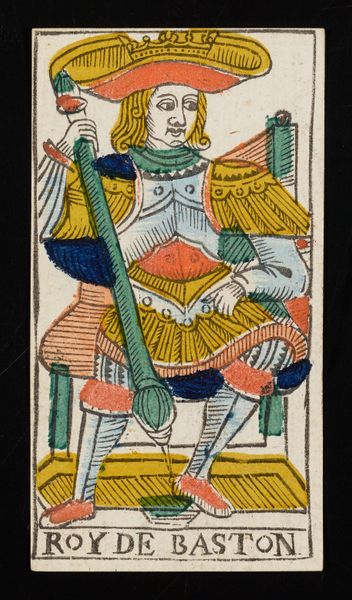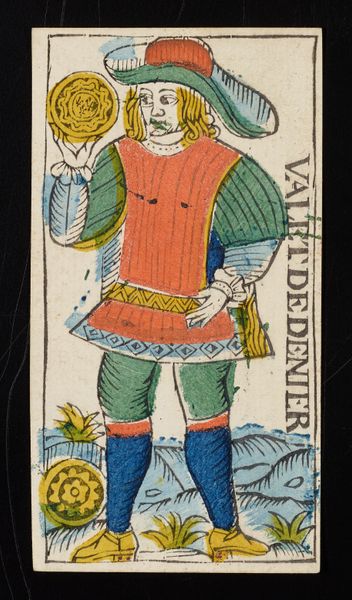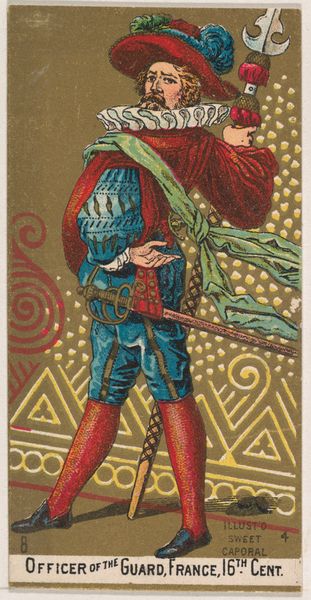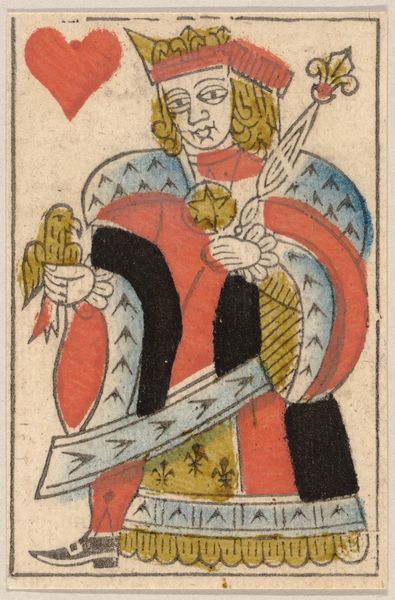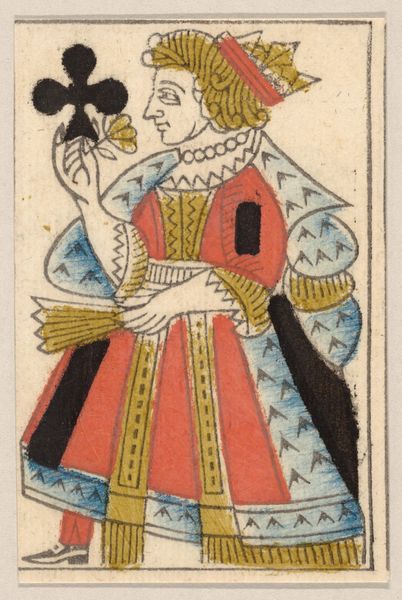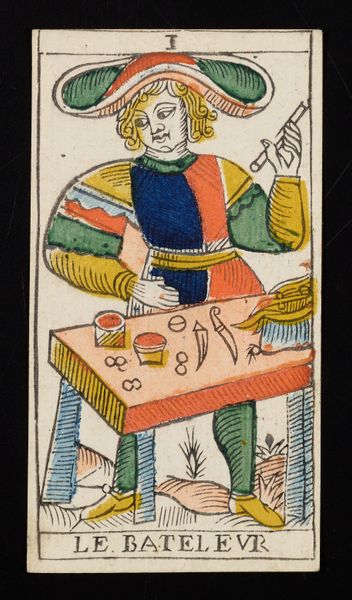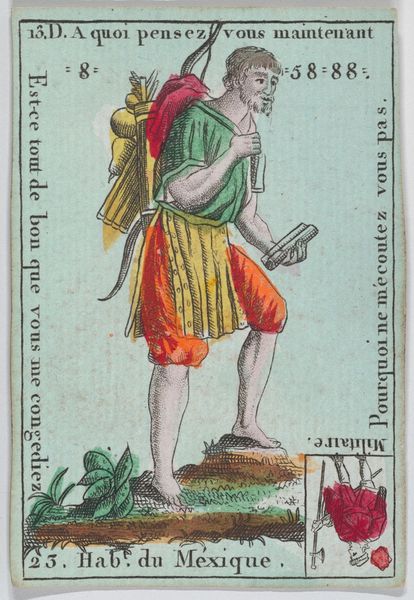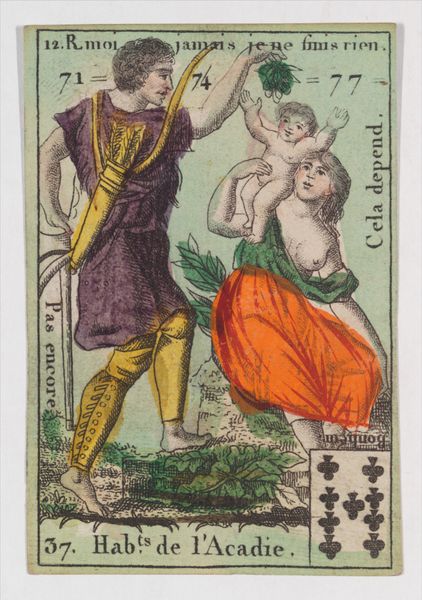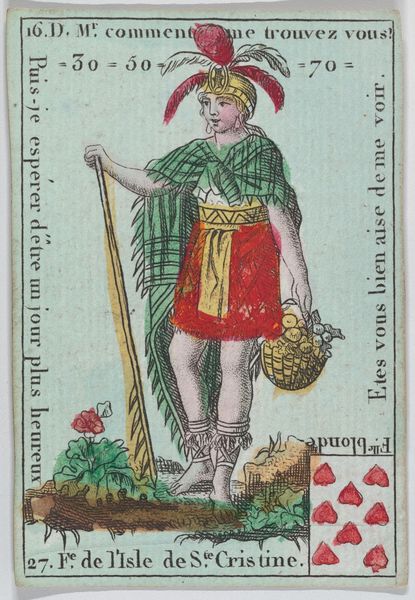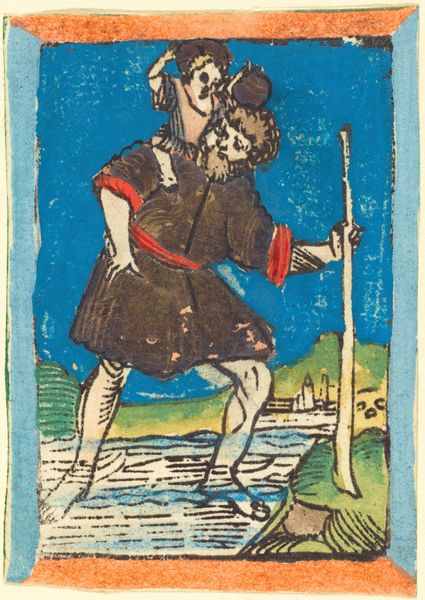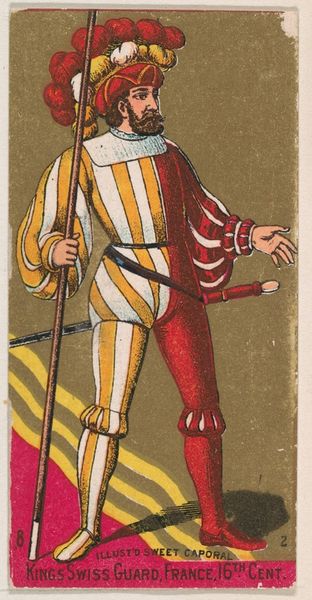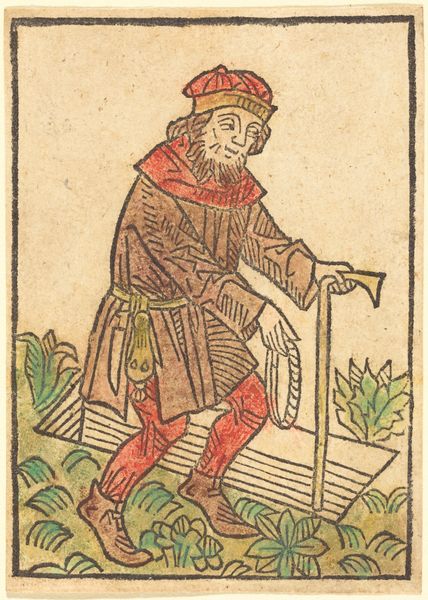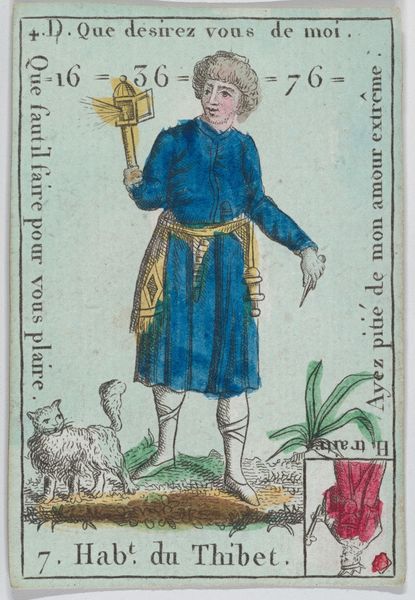
print, etching
#
portrait
# print
#
etching
#
figuration
#
genre-painting
#
rococo
Dimensions: 4 7/16 x 2 7/16 in. (11.27 x 6.19 cm) (image, sheet)4 5/8 x 2 1/2 in. (11.75 x 6.35 cm) (sheet, each)
Copyright: Public Domain
Curator: I find this image striking. We're looking at the "Page of Swords", an etching crafted by Claude Burdel around 1751. It is currently held in the Minneapolis Institute of Art. Editor: Yes, it’s hard to miss! At first glance, the colour palette, almost like a stencil print, draws me in, despite its relative simplicity. He almost looks mischievous, a young man poised between worlds with that sword held upright. Curator: The image forms part of a larger cultural object: a deck of tarot cards. Its arrival in Europe has long been speculated upon, with the cards’ association with divination linked to a rich social history. As we explore the history of tarot, what do you make of this particular 'page' archetype within this visual tradition? Editor: Well, thinking about representation, this ‘page’ figure complicates archetypes and class dynamics. Look at how his garments signal noble status, the bright clothing and the weapons that mark him out, and notice his somewhat haughty look. The character feels ambivalent and speaks to constructed identities—and reminds us who possesses cultural power in these settings. Curator: That’s a valuable reading. This specific tarot design and printing—and the way the card itself signifies change and watchfulness—resonated profoundly during a turbulent 18th century on the cusp of modernity. Editor: Indeed, if we frame this through gender studies, this "Page" could reflect the expectations put on young men within that era. What type of societal expectation do you believe he might reflect within this specific print? Curator: It certainly encourages us to reconsider masculinity—the performative nature of the attire and gesture speaks to this as much as anything else. This era, marked by social stratification and revolution, provided contexts ripe for questioning roles. Editor: Absolutely. For me, seeing the "Page of Swords" prompts deeper engagement with the power dynamics embedded within the imagery. This extends beyond pure artistry into spheres of cultural symbolism, class conflict, and complex representation. It encourages considering social critique and what may underpin society. Curator: Indeed, its preservation highlights the importance of analyzing images as products shaped by forces much bigger than the artwork, prompting insights across philosophy, theory, and studies focused on cultural impacts. Editor: A great reminder of art’s unique power!
Comments
No comments
Be the first to comment and join the conversation on the ultimate creative platform.
